Upload Video to the Companys Azure Environment
Home / Microsoft Teams with Azure DevOps Services (Collaborate, Communicate and Gloat)
Overview
Microsoft Teams is a hub for teamwork in Office 365. Keep all your team's chats, meetings, files, and apps together in one place. Software evolution teams get instant admission to everything they need in a dedicated hub for teamwork, that brings your teams, conversations, content and tools from across Office 365 and Azure DevOps together into 1 identify.
Prerequisites
-
You should have Office365 business relationship in order to integrate Azure DevOps Services with Microsoft Teams.
-
Only Azure DevOps organizations in the same organization (AAD tenant) tin be used to integrate with your Microsoft Teams account.
You can outset a complimentary trial if you don't accept Office365 business relationship from here
In this lab, you'll learn about how Azure DevOps integrates with Microsoft Teams to provide a comprehensive conversation and collaboration feel, across your Active and development work.
Getting started with Microsoft Teams
-
Launch Microsoft Teams - you can either open the web app or download the app to your desktop from here
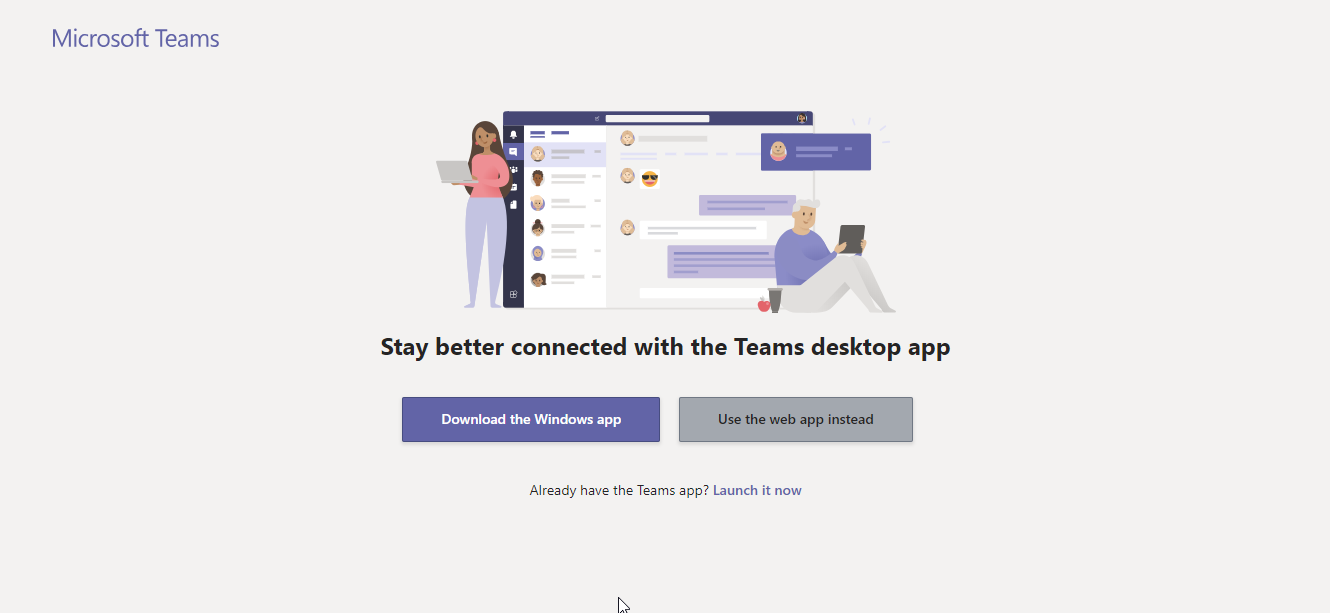
-
Later launching the app, on the left side of Teams, click Teams and and then at the bottom of the teams listing, click Join or create a team. A team is a collection of people who gather together around a common goal.
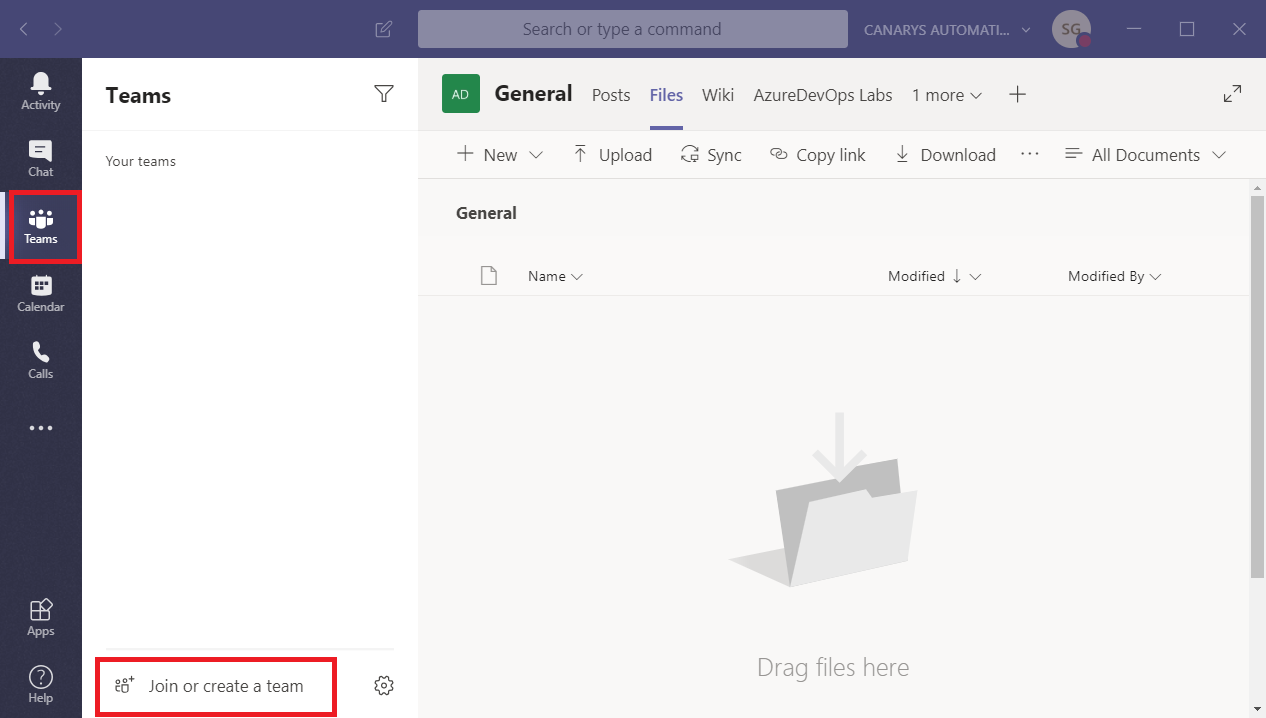
-
In the Join or create team window select Create team.
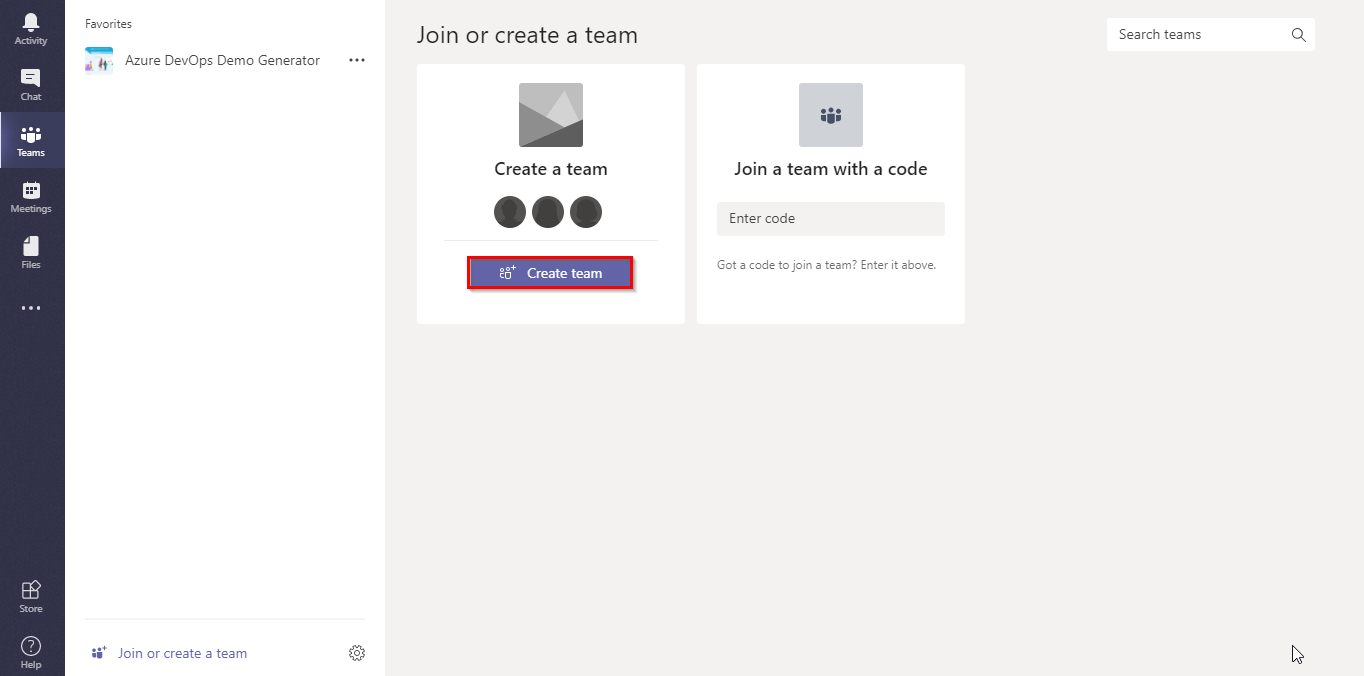
-
Select Build a team from scratch and then select the privacy settings.

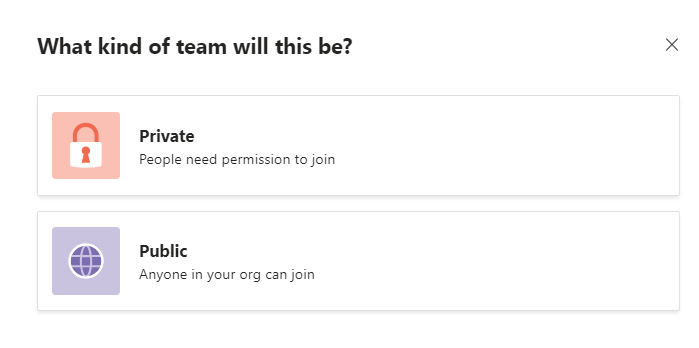
-
Requite a name for your team and clarification if needed and click on Create.
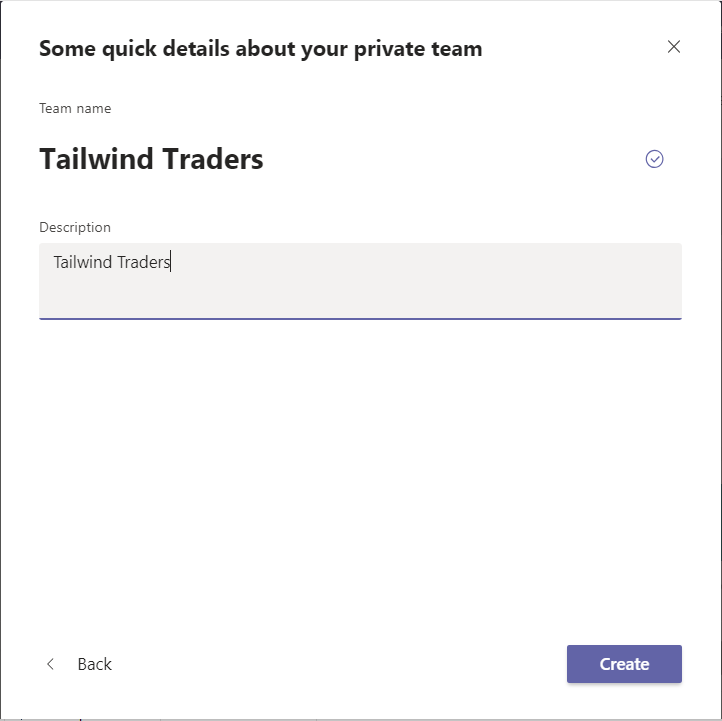
-
Add members for your squad in society to get notified the events that occur and also commencement conversations with your team members.
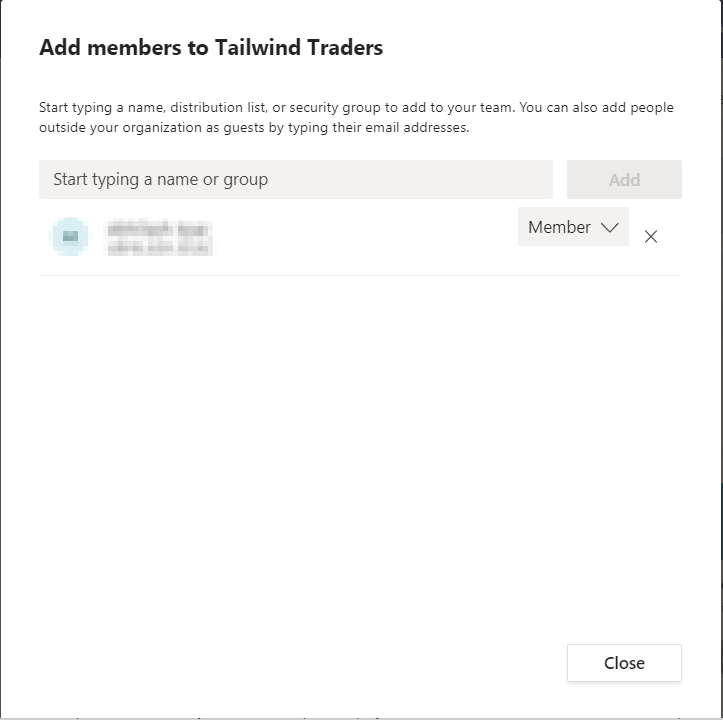
Integrating Microsoft Teams with Azure DevOps Services
Azure DevOps Services integration with Microsoft Teams provides a comprehensive conversation and collaborative experience across the development cycle. Teams tin can easily stay informed of important activities in your Azure DevOps team projects with notifications and alerts on work items, pull requests, code commits, build and release.
-
Select Tailwind Traders squad that was created. Click the ellipsis or '…' correct side at the top nav of your team channel, and then select Connectors.

-
Select Azure DevOps connector from the listing and click Add.
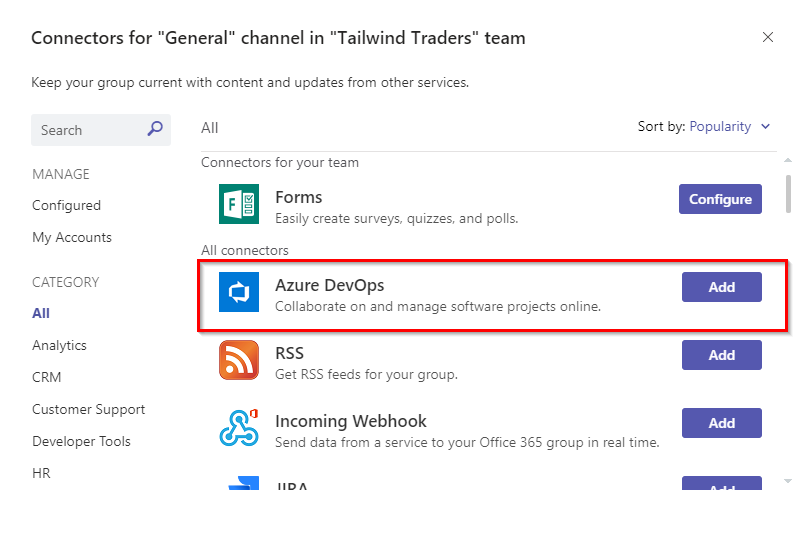
-
Click Add to add the connector for your squad.
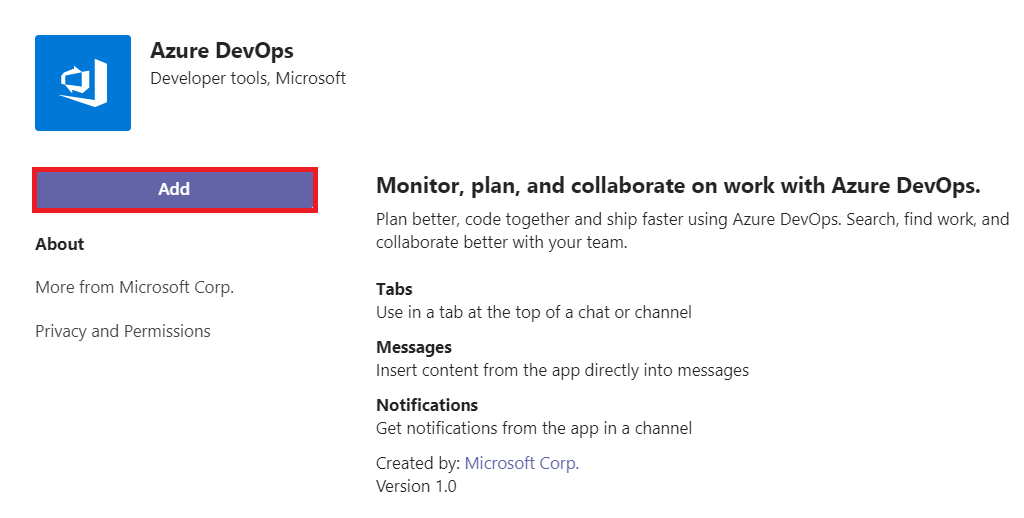
-
Select your system (you may exist prompted to sign in first), the project and your squad. Choose the type of activity you desire to be notified about. Depending on the event, you may be given further fields to filter down the notifications so you can filter out notifications your team does not intendance most. For example, for work item events, you can filter by area path, piece of work item type, and fifty-fifty item field changes.
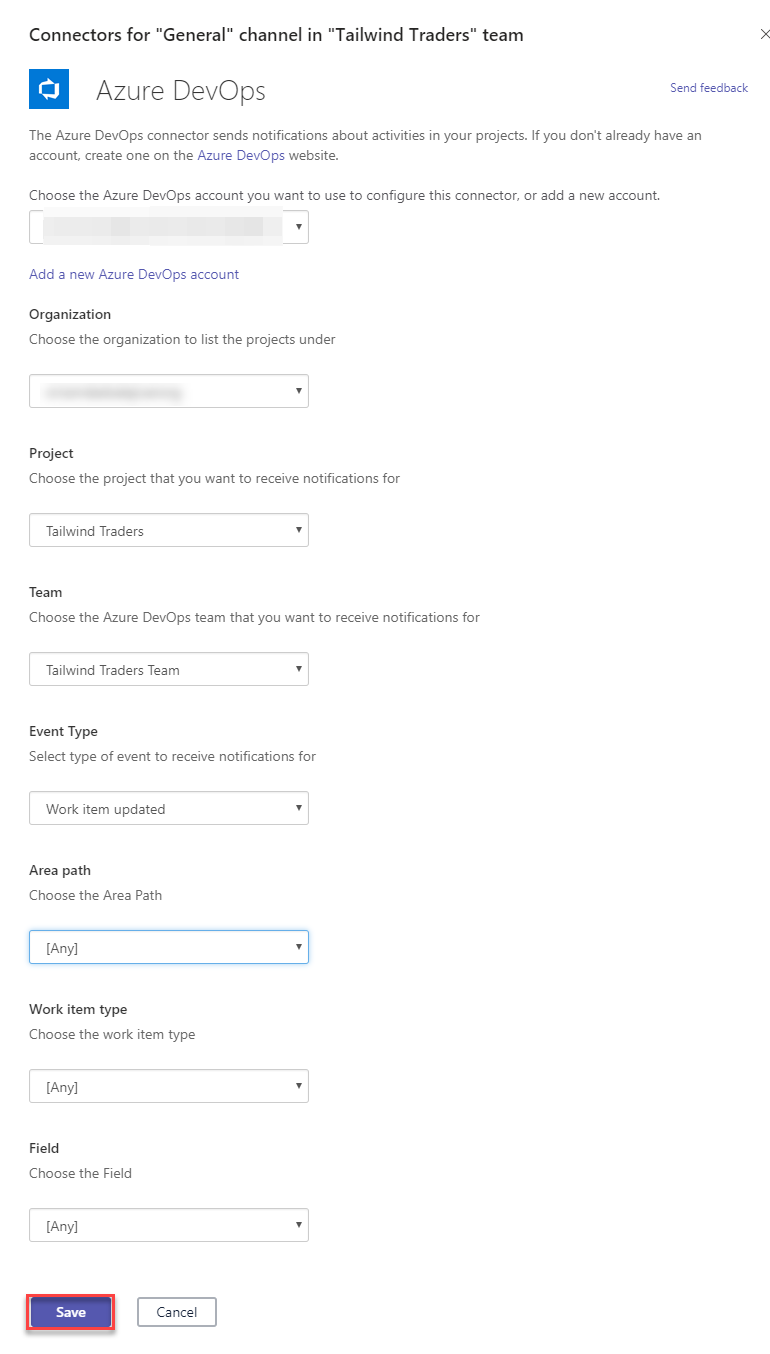
When you are happy with the configuration, Save information technology.
-
Since Azure DevOps is configured now, activity from your Azure DevOps Services project volition start actualization in your Teams aqueduct.
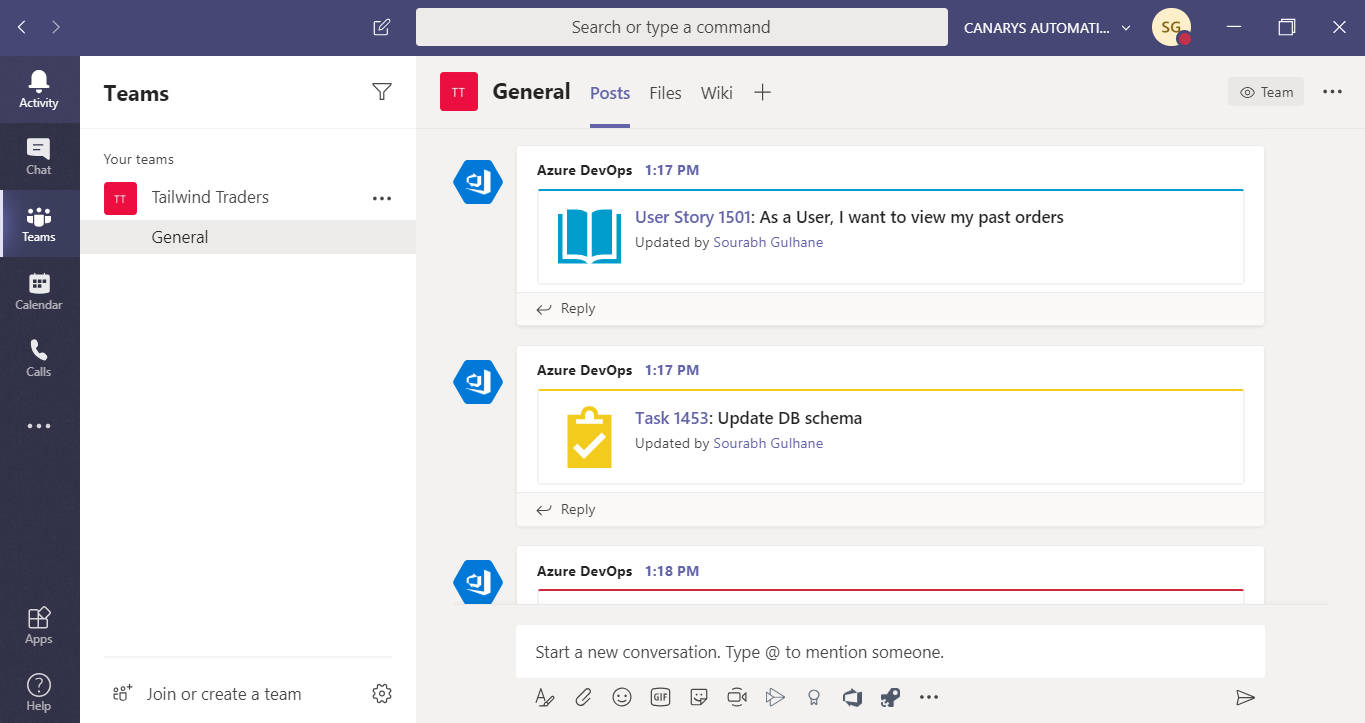
-
If you want to brand a modify to an existing connector, navigate to the Configured tab on the Connector dialog, find the connector and click Manage.
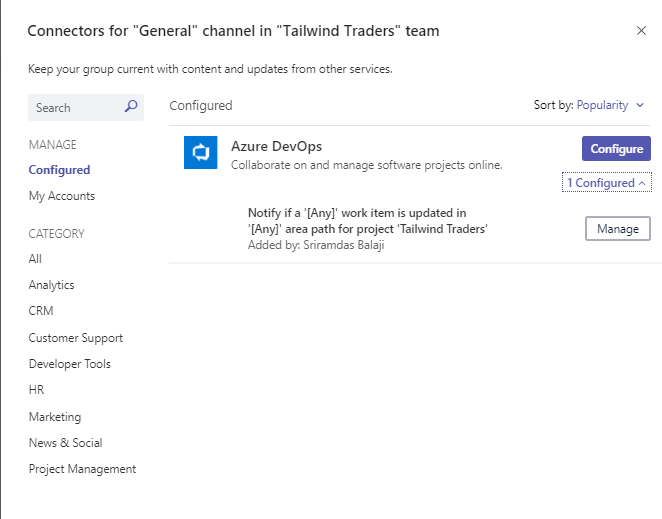
Azure DevOps Kanban board & Dashboards in Teams
Your Kanban board turns your backlog into an interactive signboard, providing a visual period of work. Equally work progresses from thought to completion, you update the items on the board. Each column represents a work stage, and each card represents a user story (blue cards) or a bug (red cards) at that phase of work.
You can bring in your teams kanban board or favourite dashboard straight into Microsoft Teams. These can be added using Tabs. Tabs allow squad members to admission your service on a dedicated canvas, within a aqueduct or in user's personal app infinite. You can leverage your existing web app to create a not bad tab feel within Teams.
-
To bring your Kanban board or Dashboard into Microsoft Teams, click the + icon to add together new tab. Find the Azure DevOps icon and select Azure DevOps

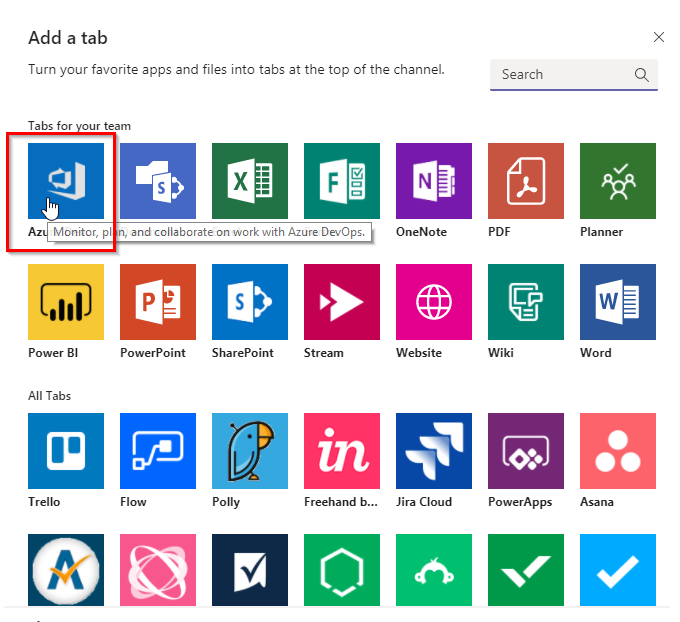
-
Select the Organization
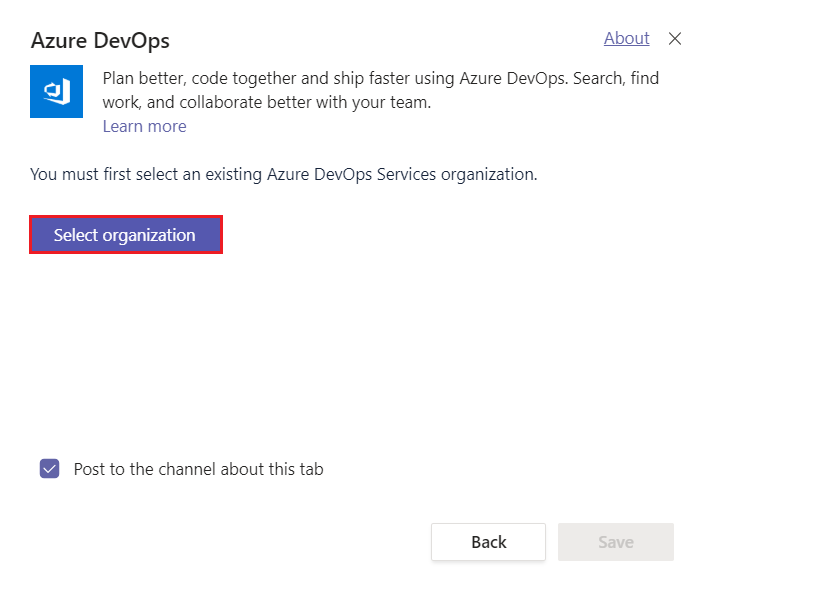
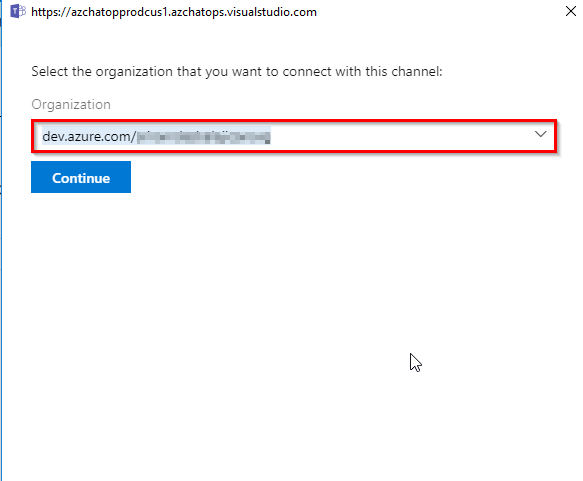
-
Once you have authenticated and selected your system, you will exist displayed a screen to select a Kanban board or Dashboard.
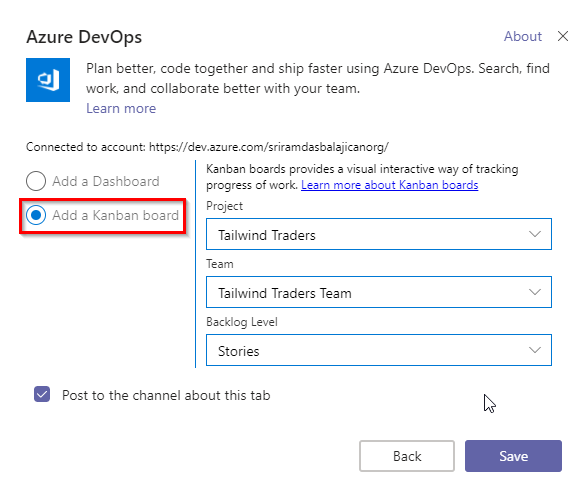
Select the Kanban board and select your project, squad, backlog level. Relieve the configuration.
-
At present you can see the Kanban Board actualization in the tab.
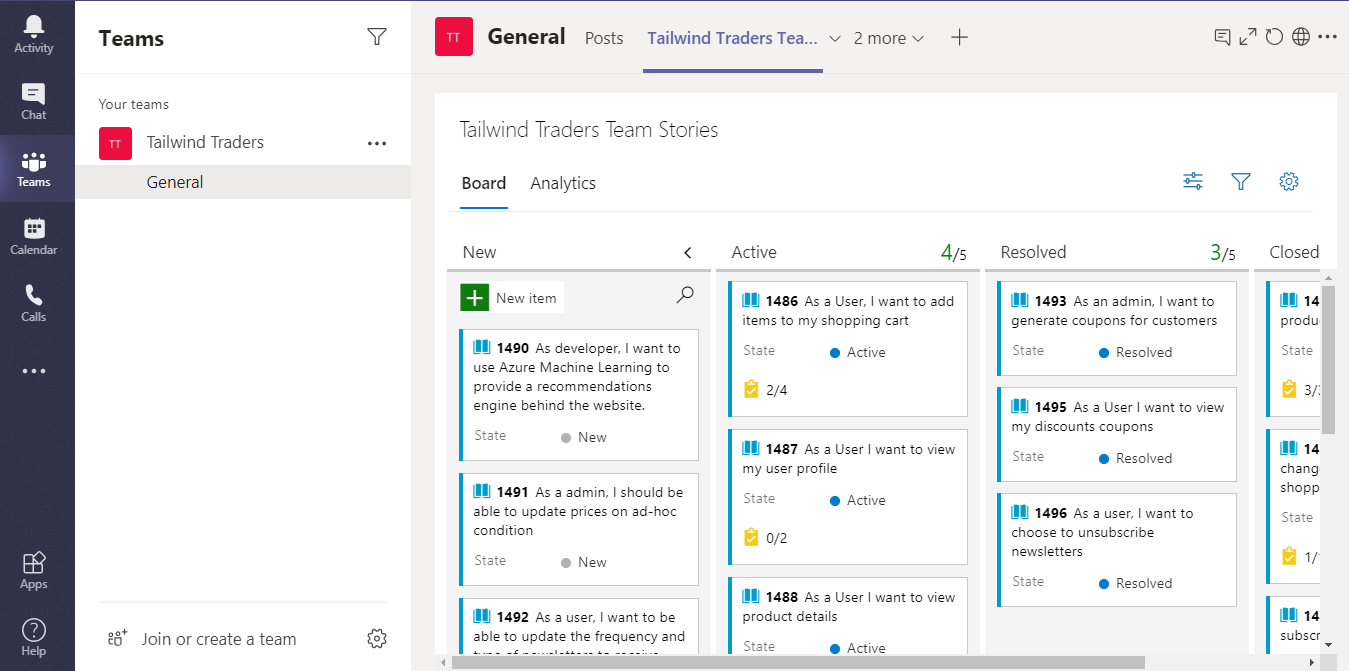
-
All the work can exist monitored during the daily standup'south and the updates are existent when the work items states are changed. It too allows u.s.a. to customize the Kanban Board from within the Teams and synced.
Azure Pipelines with Microsoft Teams
Azure Pipelines app on Microsoft Teams enables you to monitor the events for your pipelines. You can set up upwards and manage subscriptions for releases, pending approvals, completed builds etc. and get notifications right into your Teams channel for these updates. Yous tin also approve releases from within your Teams channel.
Install Azure Pipelines app to your team
-
Visit the App shop in Microsoft Teams and search for the Azure Pipelines app. Select Azure Pipelines app.
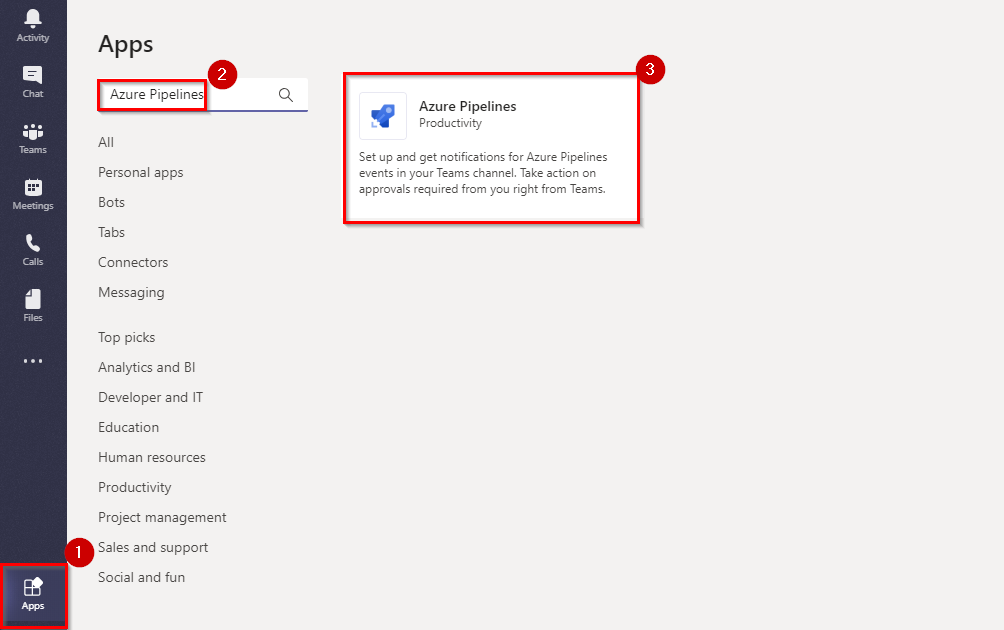
-
In the app,click on Add.

-
Once the app is added, click on the drop down and select Add together to a team
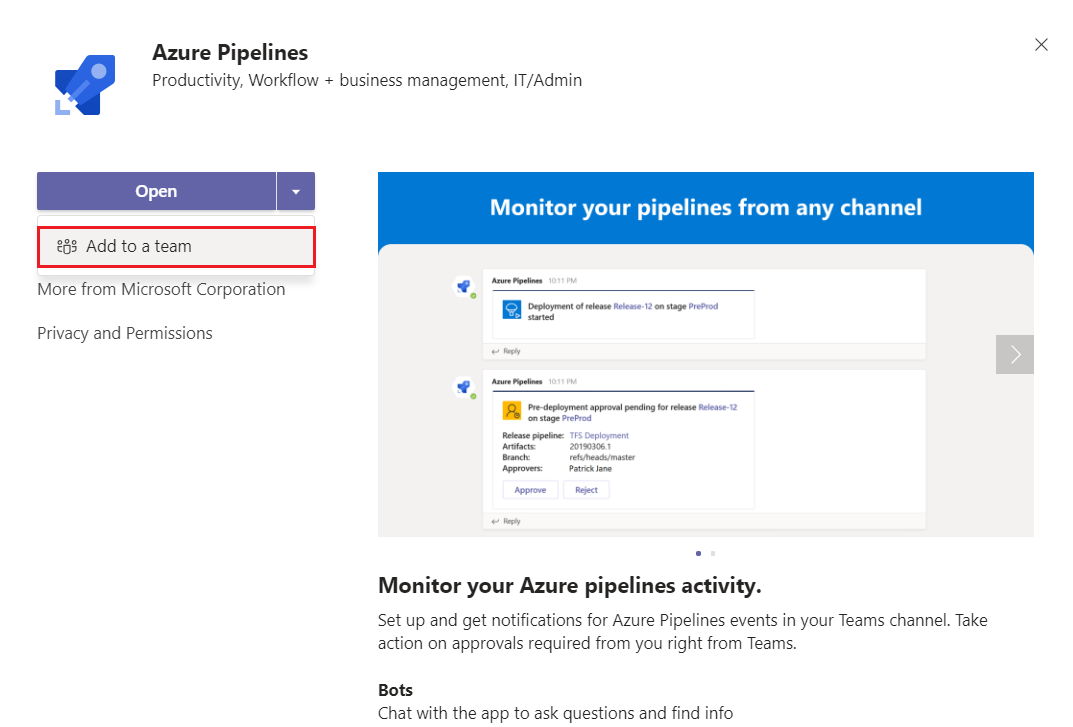
-
Select your team and click on Set up upwardly a bot

-
Use the
@azure pipelineshandle to start interacting with the app. -
In Conversations enter
@Azure Pipelines signin.
-
The app asks you to Sign in and authenticate to Azure Pipelines. Click Sign in and consummate the authentication.

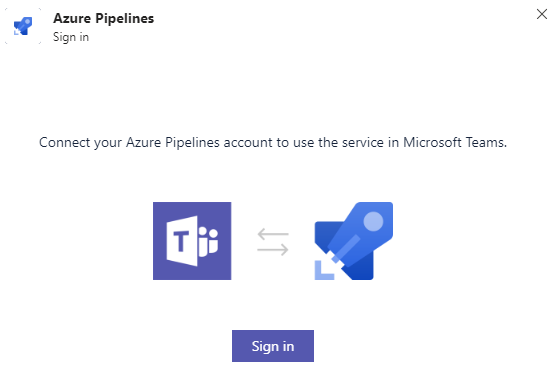
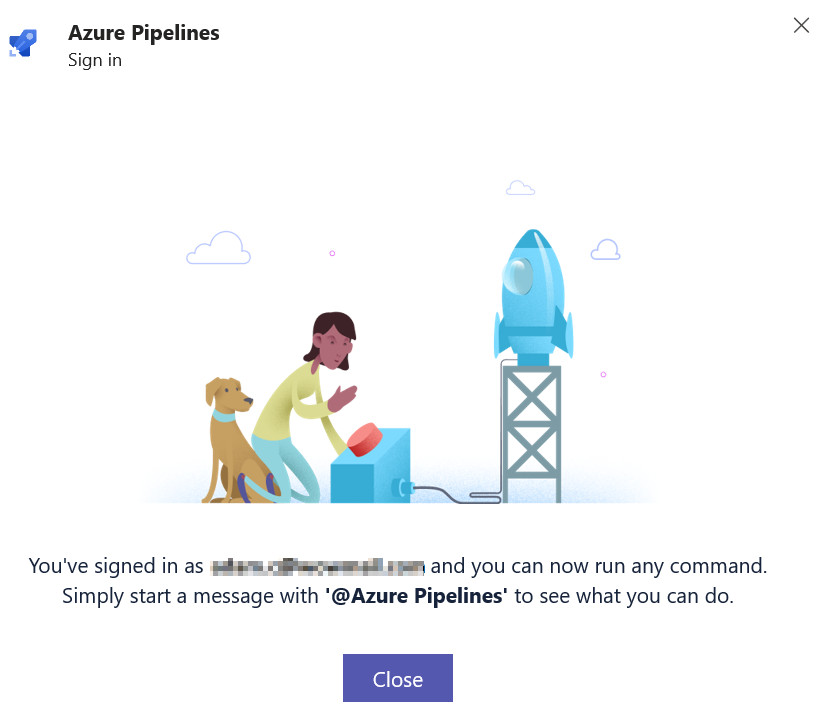
Subscribe for the pipelines notifications
To start monitoring a pipeline, utilise the following command inside a channel:
@azure pipelines subscribe [pipeline url]
The pipeline URL can be to any page inside your pipeline that has a definitionId or buildId/releaseId present in the URL.
-
For instance, to subscribe for Build pipelines enter
@azure pipelines subscribe https://dev.azure.com/myorg/Tailwind%20Traders/_build?definitionId=2
For Build pipelines, the channel is subscribed to the Build completed notification
-
To subscribe for Release pipelines enter
@azure pipelines subscribe https://dev.azure.com/myorg/Tailwind%20Traders/_releaseDefinition?definitionId=2
For Release pipelines, the aqueduct is subscribed to the Release deployment started, Release deployment completed, and Release deployment approval pending notifications.
-
Managing Subscriptions: Yous can add or remove subscriptions by using the following command
@azure pipelines subscriptionsThis control lists all of the current subscriptions for the channel and allows you to add/remove subscriptions.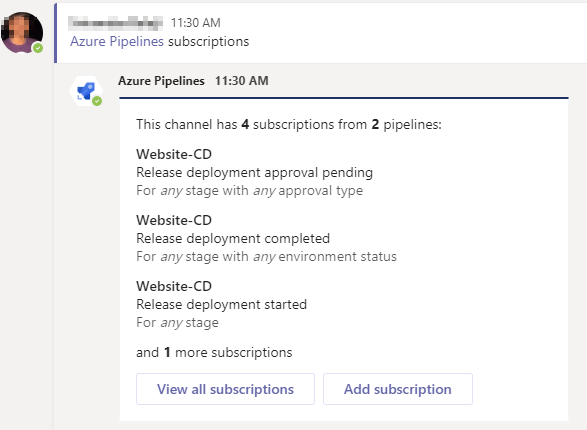
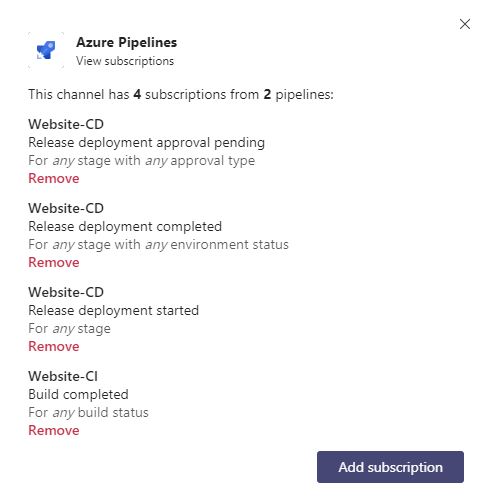
Using filters to customize subscriptions
When a user subscribes to whatever pipeline, a few subscriptions are created by default without any filters being practical. Often, users have the need to customize these subscriptions. For example, users may desire to become notified merely when builds neglect or when deployments are pushed to a production environment. The Azure Pipelines app supports filters to customize what yous run into on your channel.
Run the @Azure Pipelines subscriptions command and select Add Subscription.

-
Go notifications but for failed builds

-
Get notifications only if the deployments are pushed to prod environs
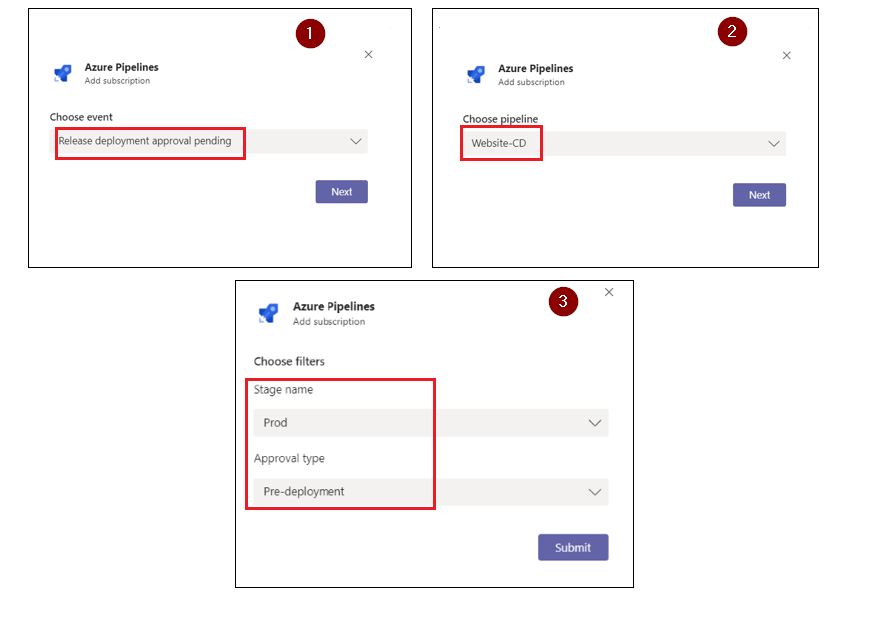
Collaboration Feel
Messages are a good fashion to connect and keep a history of the conversation. It's even better to use emoji, stickers, and GIFs to make a great impression.
-
Start having conversations with your team members by selecting the Posts tab.

-
All the conversations could be retrieved at whatsoever time without losing the history which helps the entire team to have a collaborative experience
-
Teams can have a collaborative experience with the latest updates with respect to the work items, build summary etc and then that it helps in amend transparency
-
Easily find and hash out work items from DevOps in Teams : Y'all can hands search, find and talk over work items from Azure DevOps in Teams, keeping the conversation and collaboration inside your Teams app. For example if y'all would similar to discuss about any User Story you can click on Azure DevOps icon. It will prompt a window where you can search your project workitems. Select the work item to discuss and enter your comments.
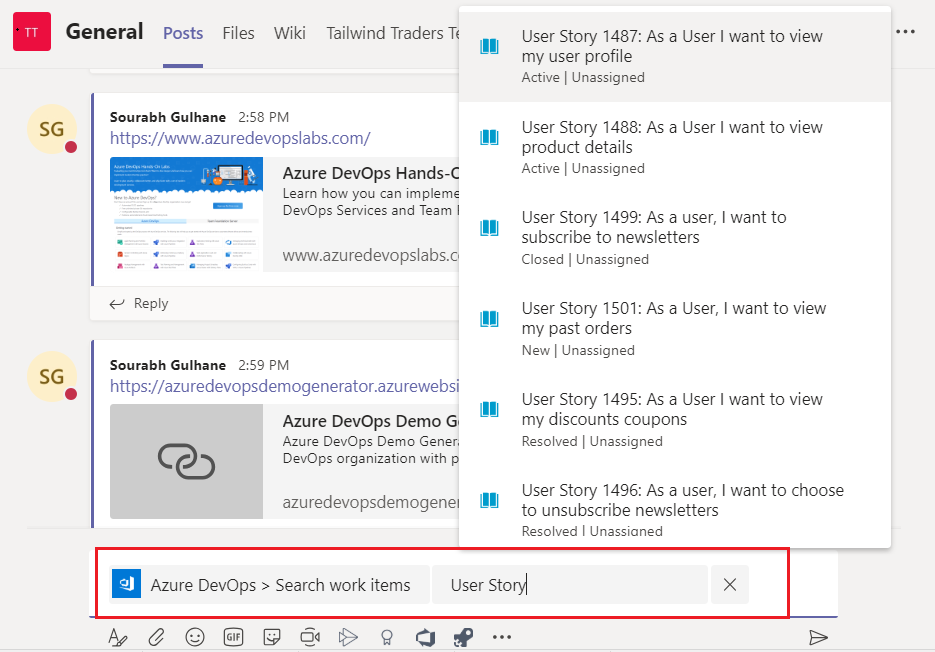

For more information almost using the Conversation tab in Microsoft Teams click here
Working with Channels
Channels are defended sections within a team to continue conversations organized by specific topics, projects, disciplines—-whatever works for your team!
-
Team channels are places where anybody on the team can openly have conversations. Individual chats are only visible to those people in the chat.
-
Channels are most valuable when extended with apps that include tabs, connectors, and bots that increase their value to the members of the squad.
To larn more well-nigh all-time practices for creating teams and channels view this short video.
-
Select the Team that was created before and click on ellipsis (…)
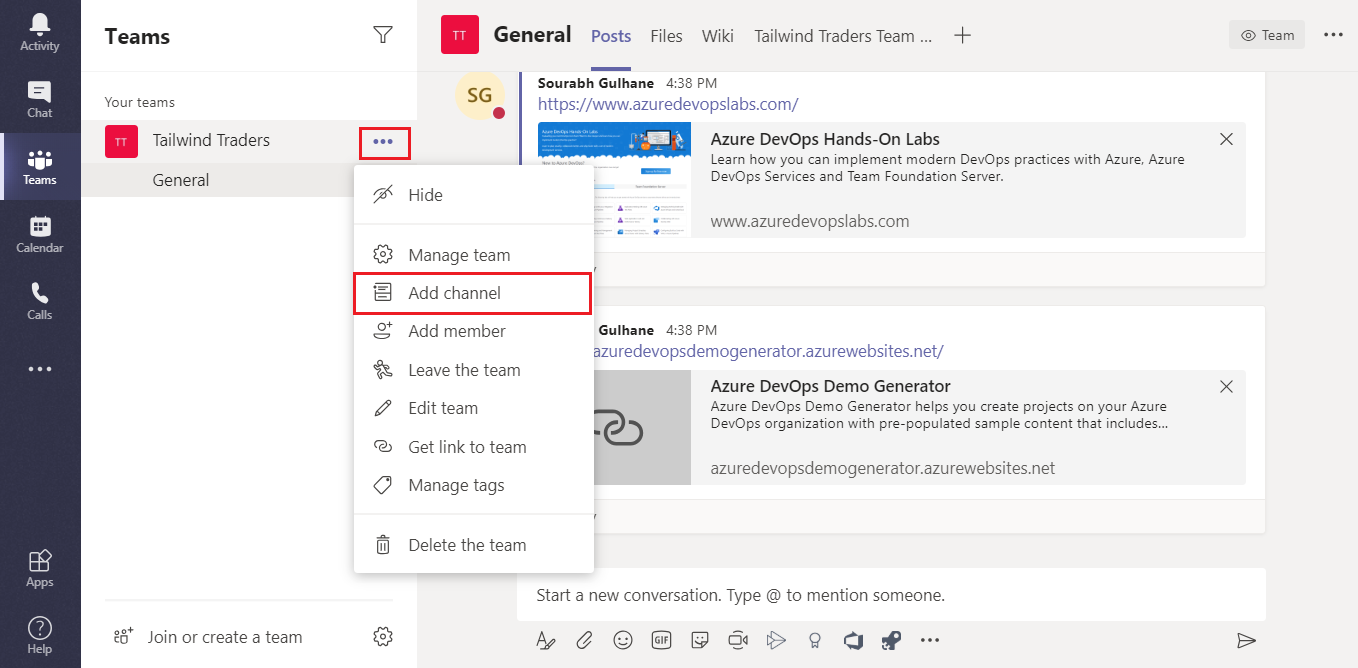
-
Requite a name, description for your channel and select privacy and click on Add

-
One time the channel is created, the conversations can be started among the team members.
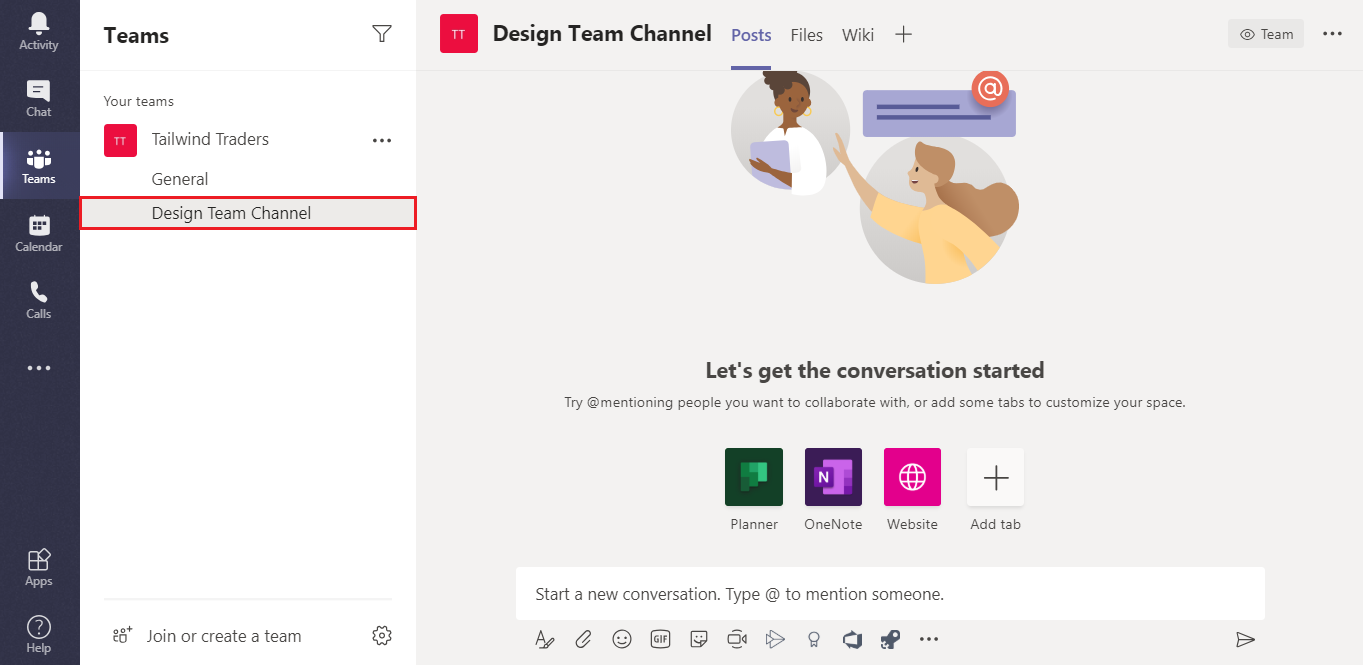
Sharing the Contents
Every bit your team works together you'll undoubtedly accept files that you'll desire to share and collaborate on. Microsoft Teams makes it easy to share files within channels. If the files are Word, Excel. PowerPoint or Visio files your colleagues tin can even view, edit, and collaborate on the files right inside Teams. For Give-and-take, Excel, and PowerPoint, they tin can run across each others changes in almost real time.
-
Select Files and select Upload to share a document with the team. You can also use Drag and drop (Using your mouse, drag the file from where it's currently located and drop it on the Teams window among the files.) method to upload files.

-
Click on the document that was uploaded from the list to offset editing and having a live conversation with your team members
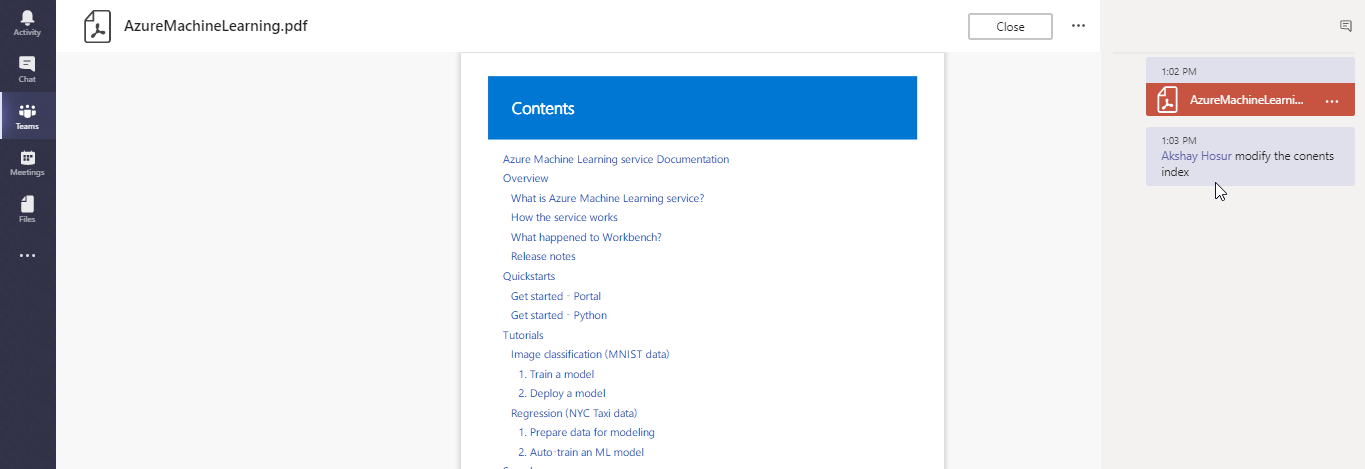
-
You can as well share the related websites inside the Teams every bit Tabs. As nosotros use Wiki to explain project objectives, epics, specs, release notes, best practices or other content to ensure all your team members and stakeholders learn, you can likewise share your Team's Wiki content as website within teams equally tab.
-
Navigate to your Azure DevOps projects Wiki page. Copy the URL.
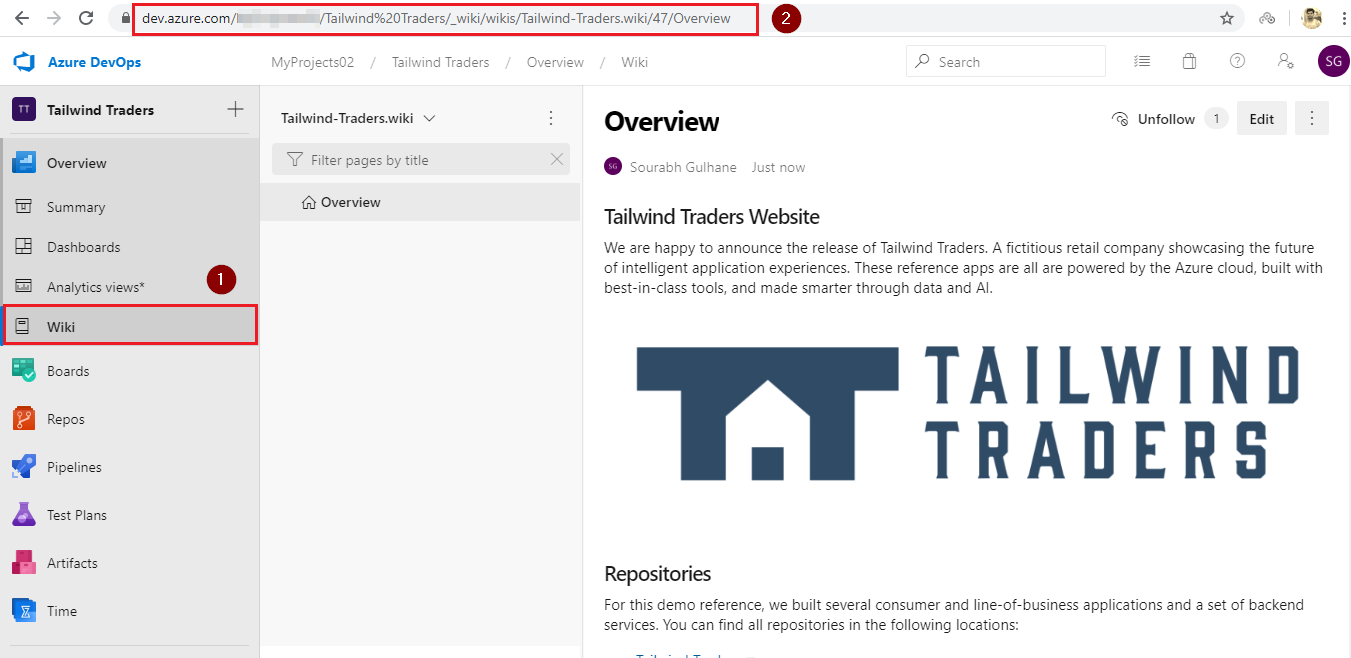
-
Now switch back to the Teams. Click on + and select Website
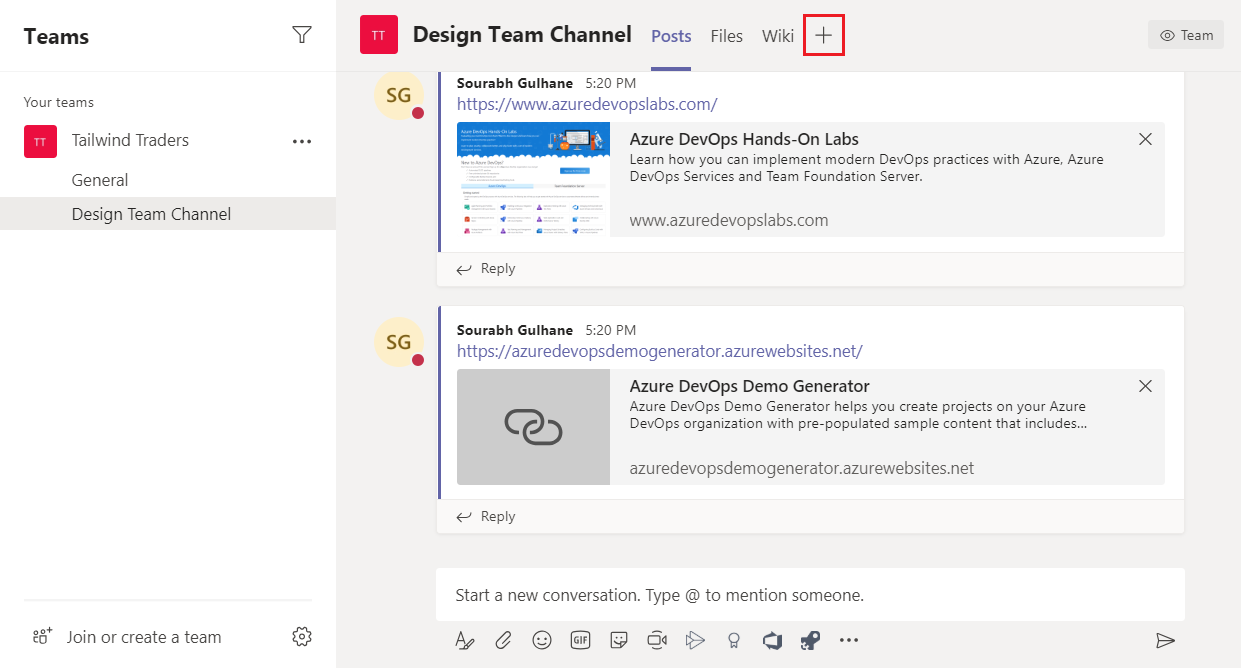
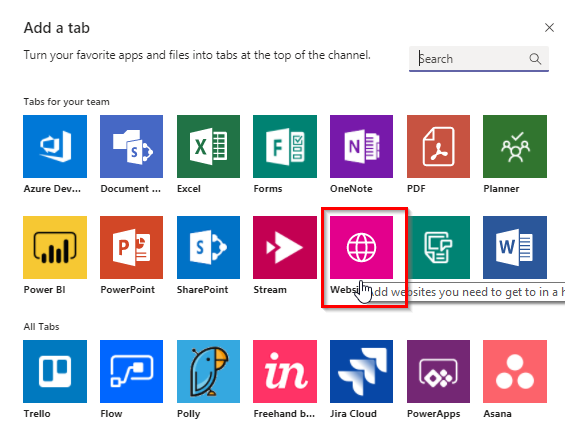
-
Provide a name for the website, enter the wiki URL copied in previous step and click on Relieve. Information technology appears on the channel where all of the squad members can access to go quick information if there were whatever updates done
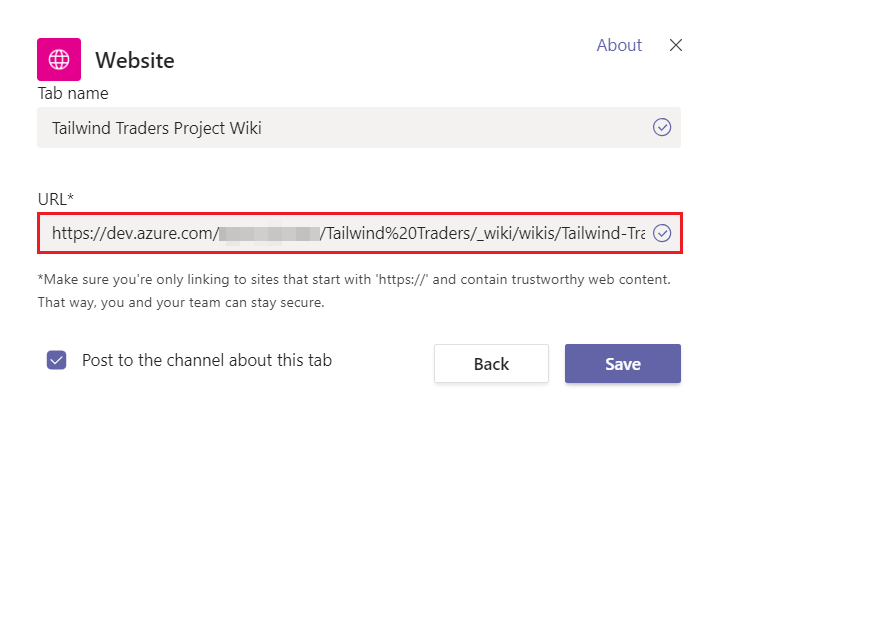
-
This is how the website/Wiki looks when added to the channel.
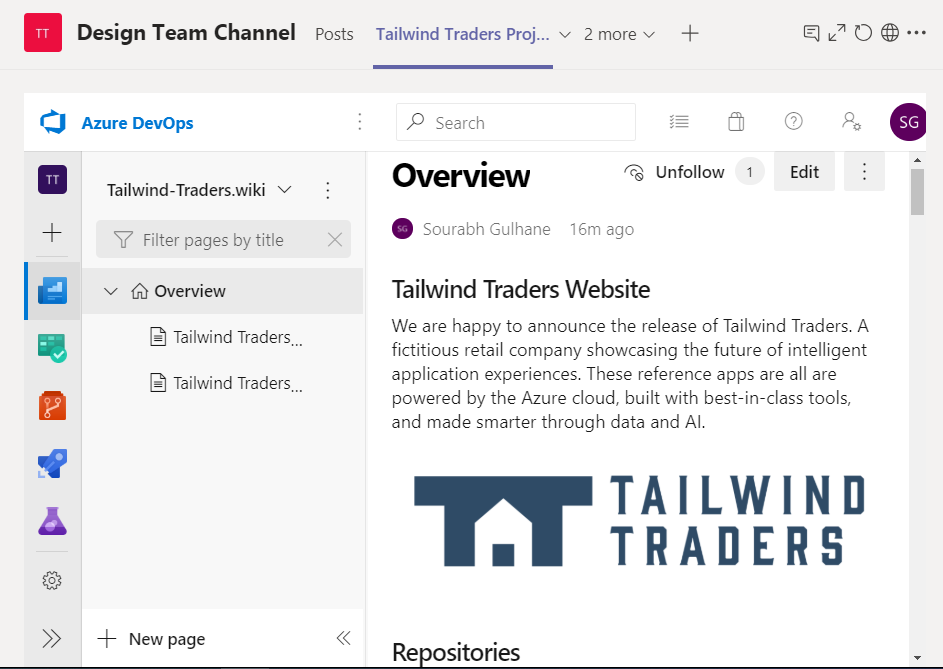
Now that you have connected Microsoft Teams and Azure DevOps call back about the other development squad information that you lot can expose via Microsoft teams, for example:
-
Add a OneNote notebook to Teams to proceed meeting notes such every bit Sprint Planning Meetings and Retrospective Meetings.
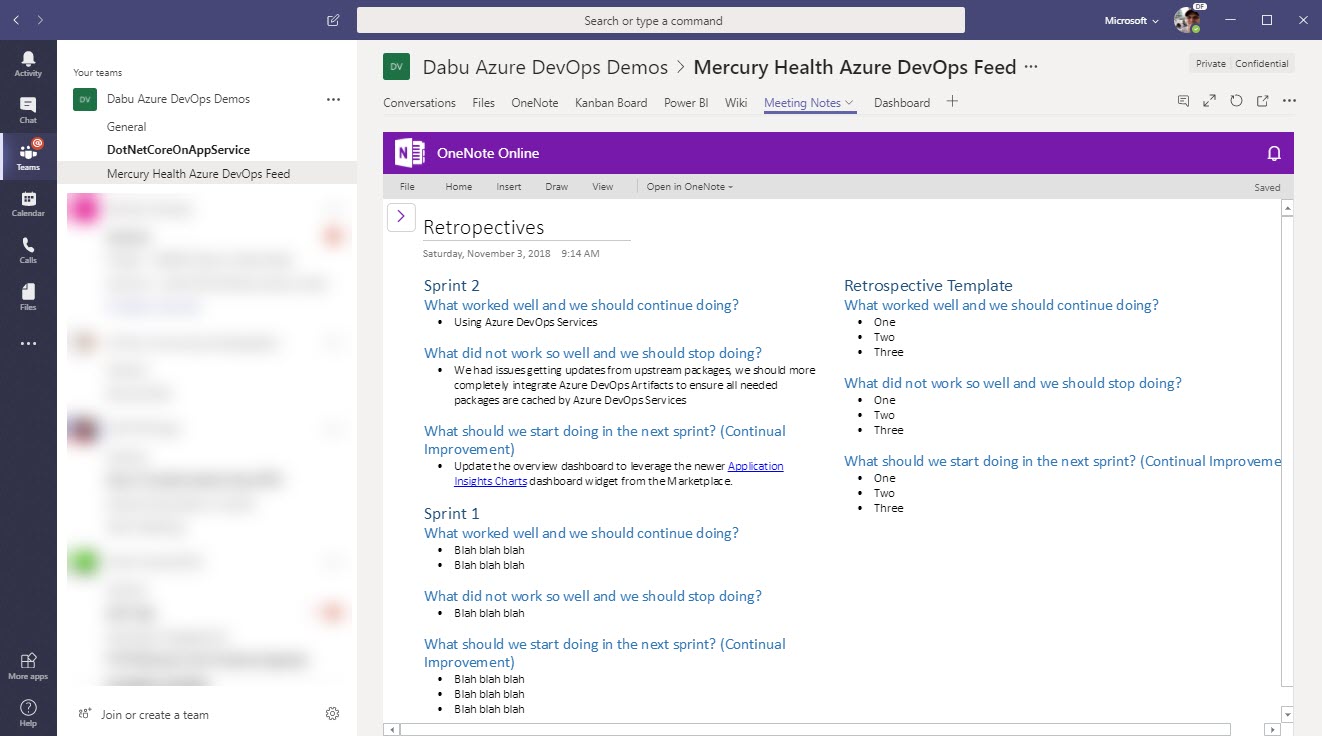
-
Connect Azure DevOps to Power BI and add a Power BI tab that displays advanced reports from Azure DevOps or other data related to your projection.
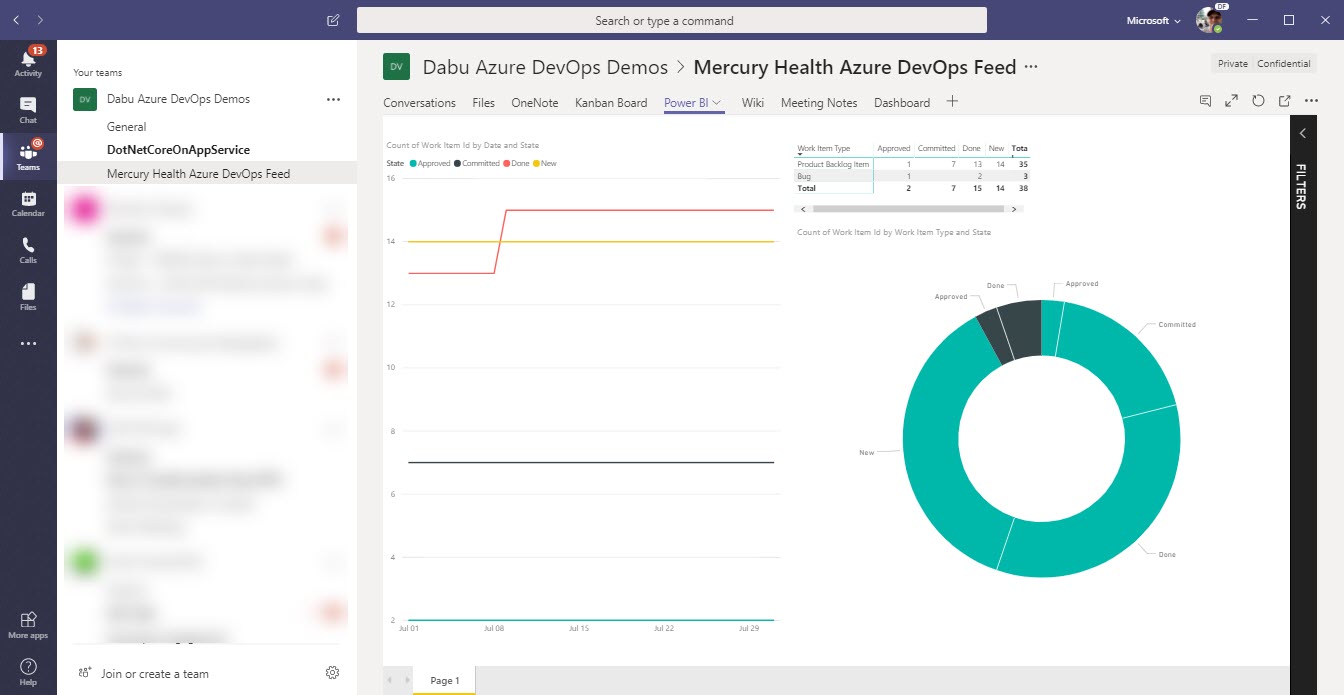
References
-
Microsoft Teams with Azure DevOps Services
-
Get started with Microsoft Teams
-
Chat, teams, channels, & apps in Microsoft Teams
Source: https://www.azuredevopslabs.com/labs/vstsextend/teams/
0 Response to "Upload Video to the Companys Azure Environment"
إرسال تعليق